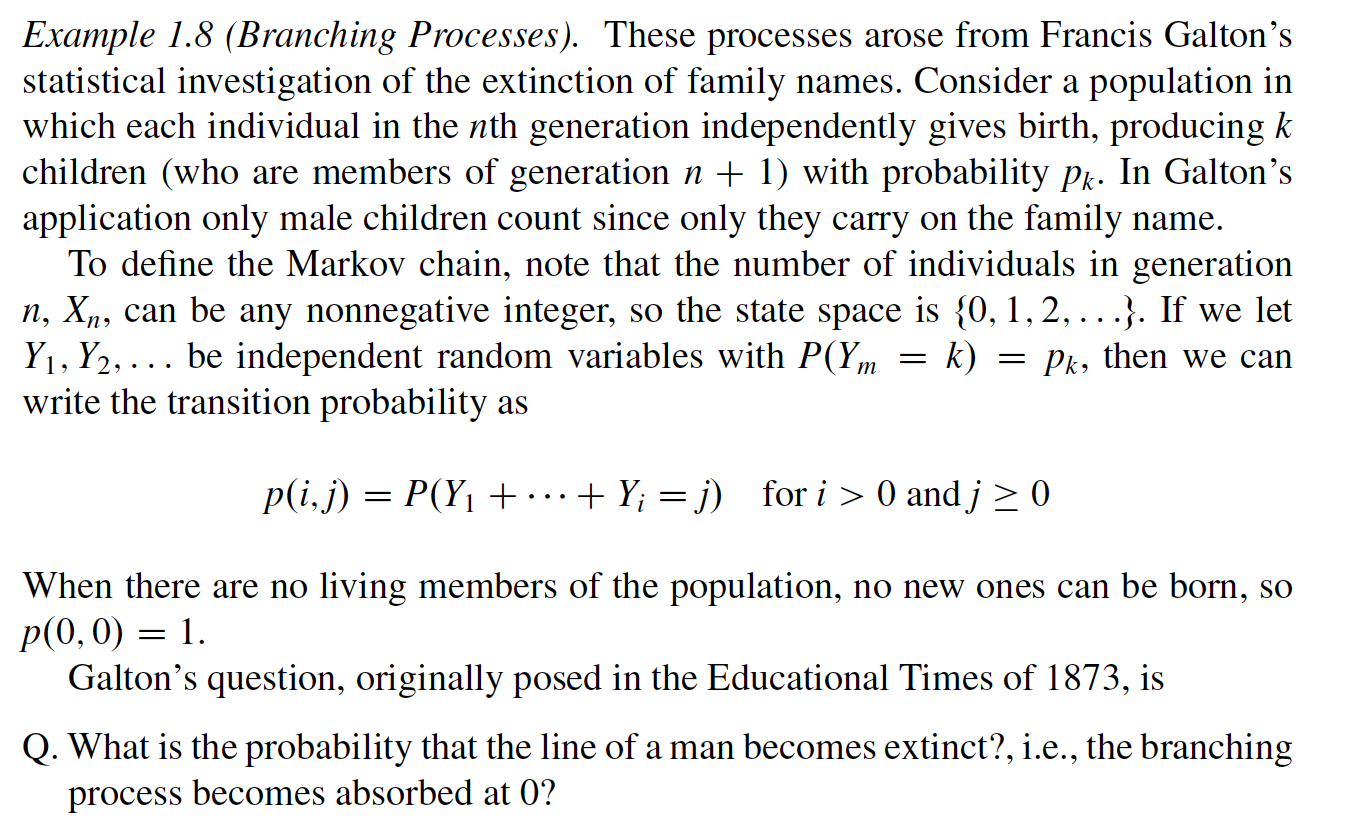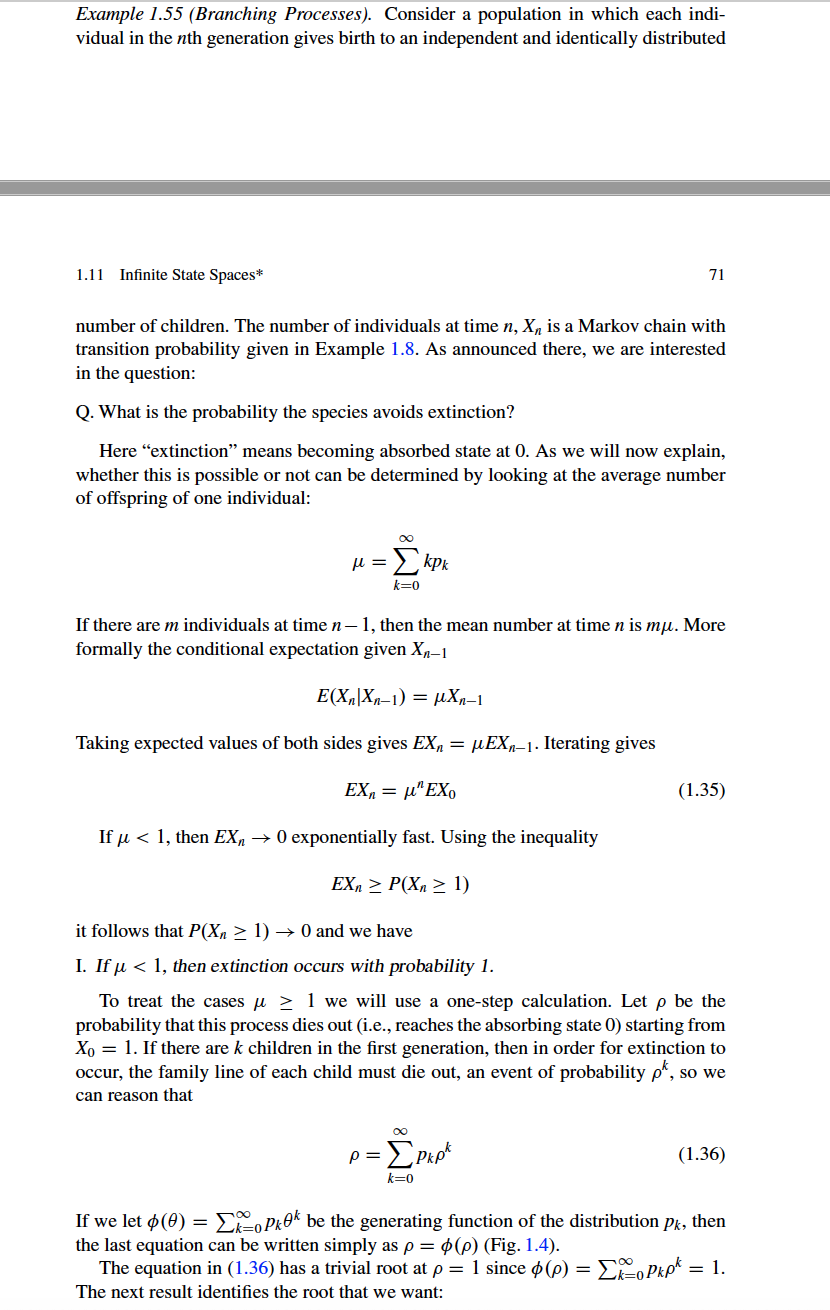Hi, I tried and failed multiple trying to solve this exercise
1.77. Consider a branching process as defined in 1.55, in which each family has a number of children that follows a shifted geometric distribution: Pk = p(1 - p)* for k 2 0, which counts the number of failures before the first success when success has probability p. Compute the probability that starting from one individual the chain will be absorbed at 0.Example 1.8 (Branching Processes). These processes arose from Francis Galton's statistical investigation of the extinction of family names. Consider a population in which each individual in the nth generation independently gives birth, producing k children (who are members of generation n + 1) with probability pk. In Galton's application only male children count since only they carry on the family name. To dene the Markov chain, note that the number of individuals in generation n, X\Ewnple 1.55 (erwhing Processes). Consider a population in which each indi- vidual in the nth generation gives birth to an independent and identically distributed 1.11 Innite State Spaces* Tl number of children. The number of individuals at time n, X,1 is a Markov chain with transition probability given in Example 1.8. As announced there, we are interested in the question: Q. What is the probability the species avoids extinction? Here \"extinction" means becoming absorbed state at 0. As we will now explain, whether this is possible or not can be determined by looking at the average number of offspring of one individual: [fthere are in individuals at time n 1, then the mean number at time n is mp. More formally the conditional expectation given X34 E(anX.._1) = \"X54 Taking expected values of both sides gives EX\" = nEX_1 . Iterating gives EX... = it"EXo (1.35) If ,u, 0 exponentially fast. Using the inequality EX\" 2 POL: 2 1) it follows that POL, 3 1) > 0 and we have I. If\" t. 1, then extinction occurs with mohahility i. To treat the cases p. 3 1 we will use a one-step calculation. Let p be the probability that this process dies out (Le. , reaches the absorbing state 0) starting from X.) = 1. If there are 1 children in the rst generation, then in order for extinction to occur, the family line of each child must die out, an event of probability p", so we can reason that 00 ,o = Zpkpx (1.36) i=0 [fwe let 49(6) = 2:0\"? be the generating function of the distribution pk, then the last equation can be written simply as p = 95(1)) (Fig. 1.4). The equation in (1.36) has a trivial root at p = 1 since {Mp} = 22:019ng = 1. The next result identies the root that we want









